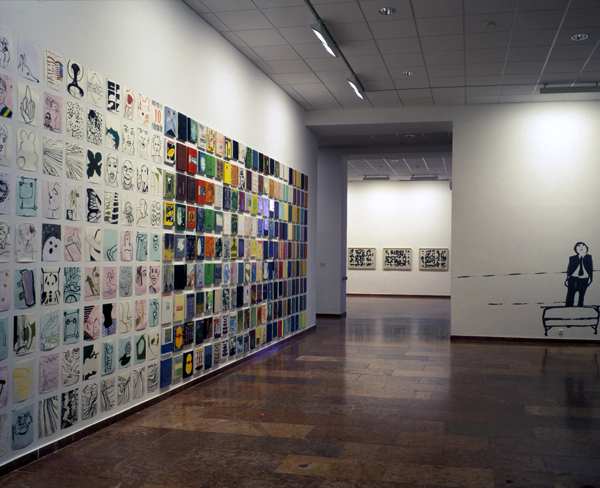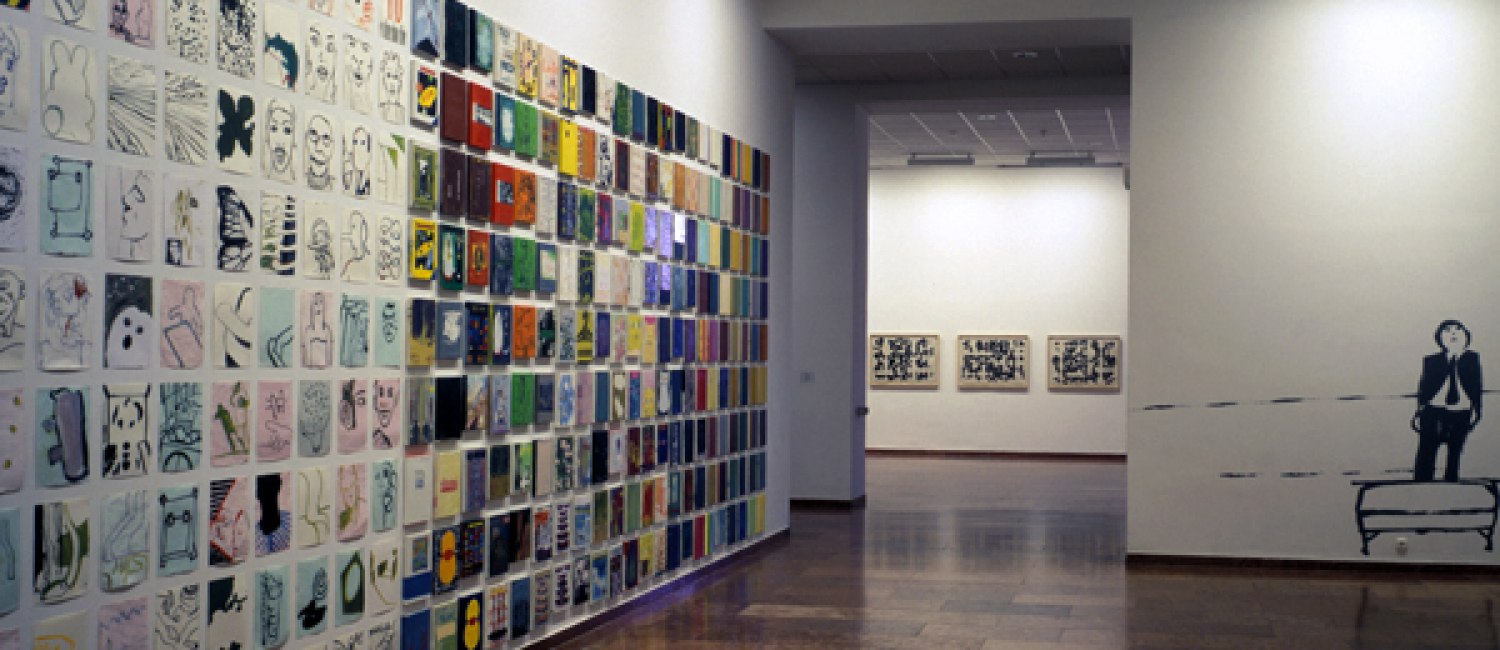The second exhibition of the Project Room in the Ludwig Museum Budapest/Museum of Contemporary Art presents the works of Éva Bodnár. Éva Bodnár studied painting in the early 70's at the Academy of Fine Arts in Budapest. She left for Vienna in 1976, where she studied at the Hochschule für Bildende Künste. She currently lives in Vienna.
Éva Bodnár endeavours to be as open as possible to take in the events of the world surrounding her. Her images are derived from her moods (good humour or sadness), memories, or even the television, and she paints on paper, canvas, or directly on the wall. She produces her works prolifically and selects from them afterwards. At the same time, she retains all of her pieces, because a work can also later win importance for her.
” It is true that neither my works nor I are kitsch romantics, nor naïve optimists. We do not radiate thundering euphoria. I believe that one thing exists in all of my paintings and drawings: they do not seek to relay any significant message. My early paintings indicated that even a banal object, like a bicycle, should have its rightful place.”
As she says, everything is her topic and at the same time she has no topic at all. She tries to catch the moment, an interesting part of a situation from her point of view. It is for this reason that her works are so different. The pictures belong together, but at the same time, each one is unique with its own story. Among the exhibited works, on view is a series of her favourite book covers, repainted pictures of beloved works from the history of art, and interpretations with all kinds of visuals, as well as material as experienced via the other senses. She even takes quotations from her own previous works.
Bodnár approaches her works with the thoroughness of a scientist. She puts herself - and her "image-making" energies to the test. Her A4-sized pictures stand at the border of drawing and painting: she paints on paper with vanish, and on canvas with absorbant aquarelles. Her cat-paintings, for example, are made with nail-polish on canvas. She also puts glittery stickers on her pictures, sometimes covering the whole surface until they become collages. Her spontaneous drawings can expand into large wall-murals. In the case of the television-drawings, she is capable of drawing through an entire film, as she did in the case of the 2 and a half hour long Ben-Hur. While following a film, she only has time to catch the most characteristic outline of a scene, which is also a concentration exercise.
”I think the pictures possess a much greater power than we would think – so much so as warning signs. I try to restrain the impact of my pictures. And in any case, I oppose the notion that art must be a battle and that there should be nothing light in it. I feel that lightness is extremely important.”
Éva Bodnár has put hundreds of small-scale pictures on one of the long side walls in the Project Room. The ordered mass of pictures is concentrated there, while the opposite side remains empty. On one of the short front walls, there is an enlarged drawing painted directly onto the wall, which one can find in the "choir" of the small pictures. In the yellow wall-papered video-corner, the visitor has the opportunity to take a rest. S/he can watch two videos of the artist, one showing the scanned pictures from the wall as slide projections, the other, her film Bugatti (1996), in which she shows another of her favourite collections: hundreds of Polaroid photographs.
The quotations are taken from the catalogue published for the exhibition, which contains an interview with Éva Bodnár by Patricia Grzonka (art critic, living in Vienna), in both Hungarian and English.

